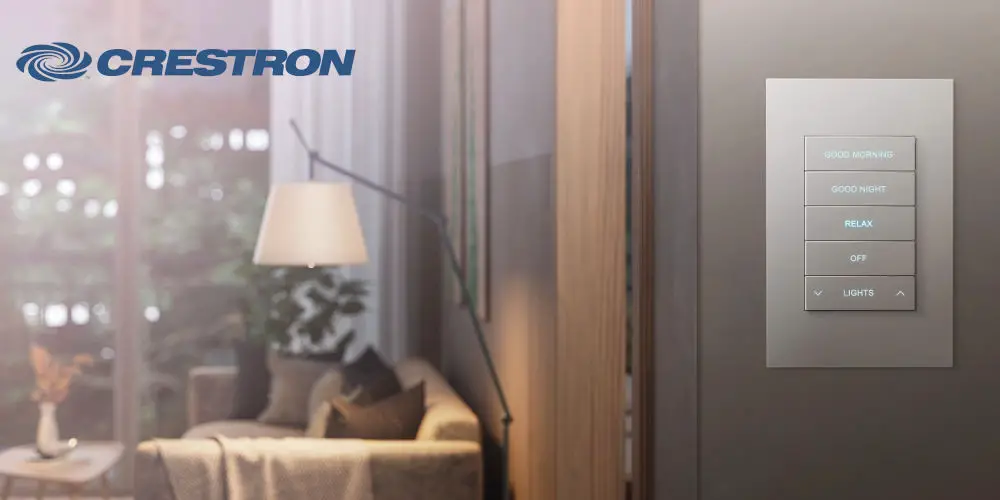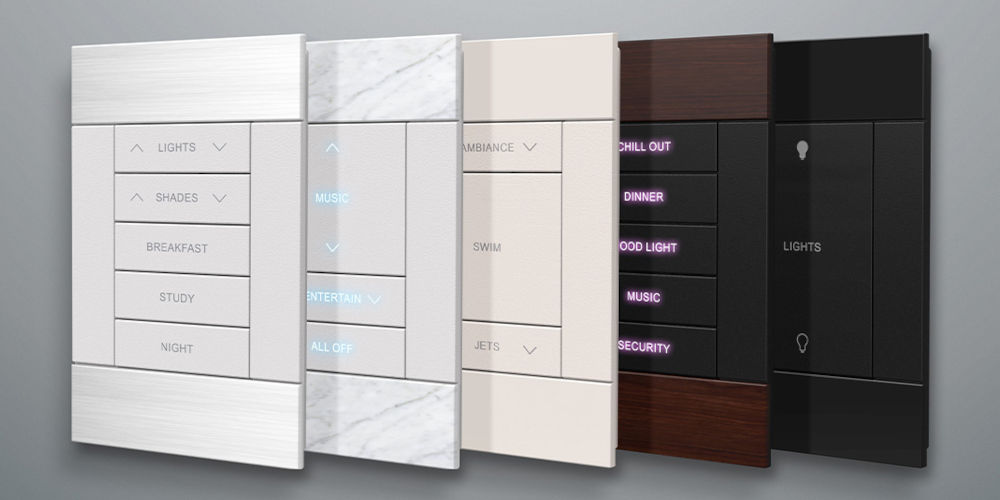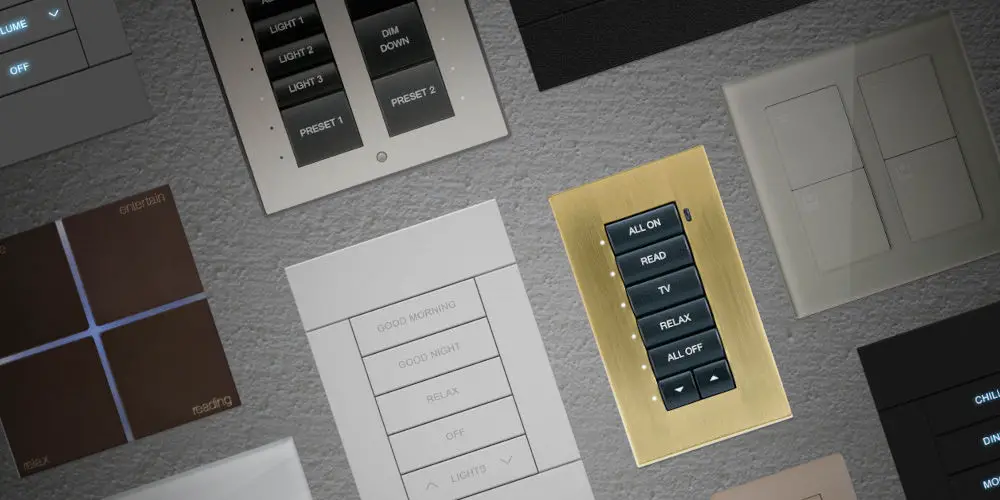What are Crestron keypads and why use them?

Often find yourself peaking at homes with a Crestron system installed? You’ll have noticed the sleek Crestron keypads and touch screens. Rather than having a load of switches for the lights, blinds/curtains, and A/V equipment that can make a wall look busy, we have keypads and touch screens.
They are a superb control option, along with mobile apps and virtual assistants. A well-rounded smart home incorporates various control options that make it easy to operate your home as you wish.
As there’s only a handful of information about Crestron keypads online, we felt it was time to dive into the topic and give you a better idea of what they can do, if you can customise them, and how to order your keypads.
Why use keypads to control your Crestron smart home?
You’re not short of control options with Crestron. You can programme devices to turn on/off automatically, use the app, a virtual assistant (such as Alexa or Siri), a keypad, or a touch screen. They all have their place.
In a Crestron system, devices are wired to a central controller, and not to local switches. If this sounds confusing, consider how a standard light works. You create a circuit with a switch and bulb. You might remember playing with those components in science class!
However, with Crestron and other high-end home automation systems, each light is on a separate circuit that takes power from a central controller. So you need a local controller that works with the overall system to turn on or off your light.
Keypads enable you to control devices using switches, much like you would with a light switch for your light. However, they can control devices, scenes, or functions. They remove the need to have multiple switches mounted on the wall.
Plus, they look far better than your average white or black plastic light switch!
What types of Crestron keypads are available?
There are a few different types of Crestron keypads available, including wall-mounted and wireless keypads. Crestron also offers tabletop keypads, but they are mostly designed for commercial installation in large rooms. We’ll focus on the first two types.
Wall-mounted keypads
These are wired into the system and sit flush with the wall, much like a traditional light switch. The Crestron Cameo keypad range, for example, can have as little as 4 buttons, all the way up to 12. It depends on your requirements.
In addition to the Cameo range, Crestron also manufactures the Horizon range, which is equally attractive and flexible.
Wireless keypads
These look similar to the wall-mounted variety but run off a battery and can be easily moved around the home without needing to rewire. The Crestron Zūm range offers wireless keypads ranging from 2 to 8 buttons.

photo by Crestron
What features do keypads offer?
As you can customise each keypad to your requirements, they are highly flexible and seamlessly mount into a standard UK/EU backbox.
For example, you could have a 2-button keypad on either side of your bed. One button could control a bedside lamp, and the other could be an all-off that shuts down the system.
In your living room, you could use a 6-button keypad that controls the lights, blinds, turns on the TV, adjust the temperature and more. Again you can mix buttons for preset scenes and individual devices.
So it’s vital that you work with your installer to design keypads that include buttons for the functions and devices you want to control.
Some Crestron dealers will start by installing white keypads with printed labels that they’ll create on the spot. You’ll then have a few weeks to play with them and figure out which buttons you need or don’t. After a few weeks, they’ll return and finalise the buttons for each keypad.
Crestron will then manufacture these in your chosen colour (5 hues are available) and engrave each button with the correct label. Buttons are backlit, making them easy to read and operate regardless of the light in the room.
Keypads vs Touch screens
You might wonder why you should use Crestron keypads when they offer touch screens and remotes. You might feel like only using Alexa, Siri, or Google’s assistant and ignoring the other options! Not so fast!
Here’s the thing, you have plenty of control options. But each has its own use with positives and negatives.
Virtual assistants, such as the Google Assistant, are great for so many reasons, including controlling your Crestron system. However, they require you to remember particular commands or tell it to adjust a list of different devices in that room.
Some people don’t want to use a virtual assistant or have to explain to guests how to use them. It can be a losing battle, particularly if you’re dealing with a fussy mother-in-law! So engraved keypads are a way to allow guests to control aspects without needing a manual or instruction.
Remotes are also fantastic, especially if you have some A/V equipment in the room and don’t fancy always carrying your smartphone or a tablet. If you only have a few devices in the room, having a remote could be overkill! Again, they have the use, just like virtual assistants.
Touch screens are another popular controller that again has its place. You don’t want them in every room when you achieve 85% of the essential control options with a 6-button Crestron keypad. Plus, some of your guests might feel intimidated by them.
Hopefully, you see why having a keypad or two in each room makes sense and how you can incorporate other options alongside them to provide an even greater level of control.

photo by Crestron
Can you programme your Crestron keypads?
Your Crestron system must be designed, installed, and configured by a highly trained person. So, you’ll need to work with a dealer to design, install, and programme your Crestron keypads. It’s not something you can do by yourself.
That said, they’ll want to know what you plan to control with each of your Crestron keypads. So consider how you’ll use each of the different options to operate your system. Also, think about what scenes you want to build.
With some thought, you’ll end up with a smart home system that improves your life and keeps your home safe.




